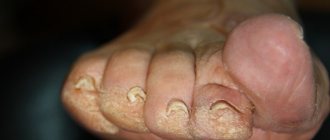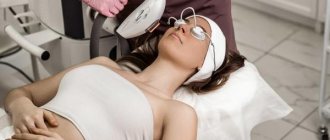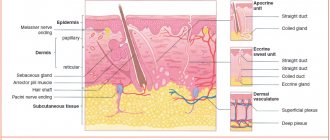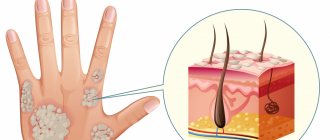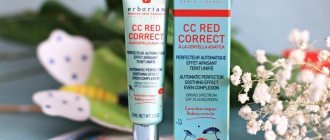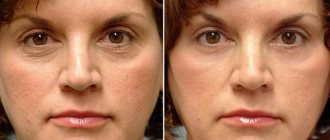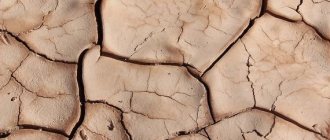Table of contents
- Etiology and pathogenesis
- Clinical features
- Principles of treatment
Keratosis (actinic keratosis, solar keratosis, actinic keratosis, actinic keratosis) is a precancerous skin condition that occurs as a result of a person’s prolonged exposure to the open sun.
In our company you can purchase the following equipment for the treatment of keratosis:
- M22 (Lumenis)
- Fraxel (Solta Medical)
- AcuPulse (Lumenis)
- UltraPulse (Lumenis)
Most often, actinic keratosis of the skin occurs in older people, but recently there has been a trend towards rejuvenation of this disease. According to statistics, the more time a person has spent in the open sun during his life and the more sunburns he has received, the higher the risk of developing keratoses as he ages.
Although a significant number of cases of squamous cell carcinoma are associated with actinic keratoses, the risk of the latter progressing to skin cancer is relatively low. Unfortunately, at present, no reliable histological criteria have been developed that could accurately predict which cases of actinic keratosis transform into skin cancer and which do not. According to various estimates, the probability of this event is in the range of 0.025–20%.
Types and causes of the development of follicular hyperkeratosis
I. Congenital hyperkeratosis
It appears in childhood and is hereditary.
Treatment is symptomatic, recommended by a pediatric dermatologist.
II. Acquired hyperkeratosis
The most common form occurs for a number of reasons:
- Metabolic and endocrine disorders, especially with hypothyroidism and diabetes mellitus .
- Poor nutrition low in vitamins “A”, “E”, “C” and group “B” – hypovitaminosis .
- Skin diseases : tertiary syphilis, HIV infections, skin tuberculosis, fungal diseases of the feet.
- Autoimmune connective tissue pathologies (lupus erythematosus, scleroderma, etc.), allergies;
- Excessive exposure to various types of rays, prolonged physical exposure or contact with harmful chemicals, etc.
Etiology and pathogenesis of keratosis
One of the significant factors in the development of keratosis is constant exposure to ultraviolet radiation . A special role is played by ultraviolet light B (UVB, 290–320 nm) and A (UVA, 320–400 nm) - it induces p53-dependent apoptosis of epidermal keratinocytes. These apoptotic keratinocytes are often called “sunburn cells” (SBCs) and can be detected by histological examination of epidermis that has been overexposed to sunlight or tanning bed lamps.
In the development of keratosis, the UV-induced mutation of the tumor suppressor gene TP53, which is related to the above-mentioned p53 protein, is of great importance. Basal keratinocytes with mutant TP53 do not undergo apoptosis, which allows them to pass on genetic abnormalities to new cells. Similar changes are found in squamous cell carcinoma and other malignant tumors.
Actinic keratoses may be promoted by a general suppression of the body's immune response. The risk group includes patients who have undergone organ or tissue transplantation and are taking immunosuppressants.
Some medications can act as photosensitizers, increasing the skin's sensitivity to ultraviolet light and promoting the development of keratoses cutis.
Microscopy of keratotic lesions usually reveals dysplastic changes in the basal layer of the epidermis, accompanied by parakeratosis and solar elastosis of varying severity. An increase in the size and pleomorphism of nuclei, hyperchromatosis, an increase in mitotic activity or an atypical nature of mitoses, and cytoplasmic pallor are recorded.
Dysplastic epidermal growths may extend deep into the papillary dermis and in some cases are difficult to distinguish from superficial invasive squamous cell carcinoma of the skin. Dysplastic epidermal changes, as a rule, do not affect skin appendages (sebaceous and sweat glands, hair, nails) ( Fig. 1 ).
Rice. 1. Histological features of keratosis (www.medscape.com)
In the epidermis, moderate hyperkeratosis is observed with dysplasia of basal keratinocytes and the formation of small outgrowths extending into the papillary dermis. The presence of solar elastosis is noticeable. Dysplastic changes primarily affect the interfollicular epidermis.
Clinical features of keratosis
Typically, actinic keratosis appears in areas that are exposed to active and/or frequent ultraviolet radiation - these are the hands, face, forehead, ears and neck. Similar lesions on the lips are called actinic cheilitis.
The clinical picture of keratosis is represented by small (several millimeters) red scaly papules or plaques with compacted and thickened epidermis, which may be accompanied by local redness ( Fig. 2 ). Often more than one lesion is present, with visible signs of secondary scratching trauma. In some cases, a cylindrical hyperkeratotic formation, a cutaneous horn, may form.
The following types of actinic keratosis have been described:
- pigmentary;
- hypertrophic;
- atrophic;
- lichenoid;
- proliferative;
- acantholytic;
- bowenoid.
In pigmentary actinic keratosis, there is marked pigmentation of the keratinocytes of the basal layer of the epidermis, which clinically and histologically mimics melanocytic proliferation.
The typical site of occurrence of the hypertrophic form is the dorsum of the hands. These lesions often form due to mechanical irritation and rubbing of the skin.
With the lichenoid form of keratosis of the skin, the presence of a lymphocytic infiltrate in the papillary layer of the dermis is noted.
Acantholytic keratosis can mimic other conditions associated with acantholysis - Grover's disease, Darier's disease, dyskeratoma verrucous, and seborrheic keratosis with acantholysis.
It is important for clinicians to remember that actinic keratosis can transform into squamous cell carcinoma of the skin (with a low risk of subsequent metastasis).
Rice . 2. Actinic keratosis on the patient’s forehead (Danish national service on dermato-venereology)
https://www.danderm-pdv.is.kkh.dk/atlas/7-33-1.html
What is follicular hyperkeratosis
Follicular hyperkeratosis is a common dermatitis caused by excessive growth of the stratum corneum of the skin, impaired desquamation of the epidermis and blockage of the mouths of the follicles with epidermal scales.
There is a violation of the release of sebum to the surface of the skin and aseptic inflammation. Visually, this gives the “goose bumps” effect.
Principles of treatment of keratosis of the skin
As a measure to prevent the development of keratosis, it is recommended to constantly use sunscreen with SPF 30+. However, it is important to maintain a balance between photoprotection of the skin and possible vitamin D deficiency associated with a lack of sunlight. With active insolation or prolonged exposure to the street, the use of UV filters is justified, but if the patient spends most of the time indoors, there is usually no need for sunscreen cosmetics.
Some medications reduce the risk of actinic keratoses. For example, it has been found that with regular use of non-steroidal anti-inflammatory drugs, the incidence of keratoses is reduced. Medications can also be used to treat keratoses of the skin, but they should be prescribed in close consultation with dermatologists and other doctors. For example, the patient can be recommended 5-fluorocil, imiquimod, a topical combination of diclofenac and hyaluronic acid.
of chemical peels can be used .
Papules and skin horns can be eliminated using cryotherapy - local freezing with liquid nitrogen. This can also be done through surgery .
The problem of actinic keratosis is successfully solved by hardware methods , among which non-ablative fractional photothermolysis, as well as traditional and fractional laser ablation can be particularly highlighted. The latter combines well with photodynamic therapy - in this case, a fractional CO2 laser serves as a means of intradermal delivery of photosensitizers.
or leave a comment
film “The Beginning” 2010
Case from practice
A 36-year-old patient came to us for consultation with complaints of papules on the skin of the extensor surfaces of the arms. Papules the size of a pinhead were located symmetrically, surrounding the hair shaft. On superficial palpation of the affected areas of the skin, a “grating” sensation occurred, which is a consequence of a large number of nodules (hyperkeratosis of the mouths of the pilosebaceous follicles). The rash was periodically accompanied by intermittent itching.
The patient independently applied emollient emollients and treated the affected areas of the skin with a hard washcloth. Such treatment brought only temporary improvement, and horny papules formed again within a week.
We asked the patient: did she have similar symptoms before? The patient could not immediately remember. We asked her the following leading questions.
- Did she have similar rashes before at birth, in childhood, in adolescence?
- Are they related to food intake or medications?
- Have similar symptoms occurred in relatives?
As a result, we were able to find out that at the age of 13–14 she already had similar problems, but she did not consult a doctor. By about age 17, the rashes stopped. Clinical manifestations and disease history allowed us to make a more accurate diagnosis and immediately exclude:
- epidermodysplasia verruciformis;
- acrokeratosis verruciformis;
- pigmentary and papillary dystrophy of the skin;
- ichthyosis.
According to clinical signs and history, a diagnosis of keratosis pilaris was made.
Appointments
The following prescriptions were made to the patient.
- Apply externally a keratolytic ointment containing 30% urea - Uroderm once a day in the morning for 2 weeks.
Urea
is a natural moisturizer, it is formed in the body, has metabolic pathways, has a keratolytic effect, softens and moisturizes the skin, and increases its elasticity.
- Apply Radevit® Active ointment externally once a day in the evenings for 2 weeks and then 2 times a day for another 2 weeks.
Radevit® Active
with vitamins A, D, E is a combined drug that has anti-inflammatory, softening, moisturizing, reparative and antipruritic effects, normalizes keratinization processes, and enhances the protective function of the skin.
- Use Retinol palmitate daily orally at a dose of 10 thousand IU/kg body weight per day for 1 month, but not more than 600 thousand IU for 1–1.5 months.
Retinol palmitate
is a natural metabolite in the body and affects the etiopathogenesis of the disease, increasing the proliferation of basal keratinocytes, and is involved in the rejuvenation of the cell population, inhibition of differentiation and reduction of keratinization.
Result
A month later, a re-examination of the patient showed a good stable result, expressed in regression of the main signs of keratosis pilaris. The patient's skin became smooth, and she herself was pleased with the result. We recommended that she continue to undergo therapy according to the proposed regimen at least 2 times a year.
Patients will thank you!
Anna Vyacheslavovna Karpova, Ph.D. honey. Sciences, dermatovenerologist, cosmetologist, associate professor of the Department of Aesthetic Medicine of the Federal Medical Education and Science Institute of the People's Friendship University of Russia
or leave a comment
Anastasia
|
29.01.2022 16:52
Hello. 10,000 IU per kilogram of weight, let’s say a person weighs 60 kg. This would be 600,000 IU. This is 181 drops!!! (If drop = 3300 IU). Or 60 tablets of 10,000 IU. There will be an overdose. Vitamin A is very toxic and taking this dosage for a month or two is very dangerous! Correct the dosage in the article!!! Maybe you didn’t mean 10,000 IU, but 1000 IU? This vitamin is fat-soluble and accumulates; excess is not excreted in the urine, as with water-soluble vitamins. But what about identifying the deficiency through analysis and monitoring after administration? There is not a word about this in the article. People die from an overdose; there have been cases where people ate bear liver, which contains huge doses of vitamin A.
Julia
|
27.10.2021 13:30
Hello! please tell me, a 2-year-old child with a rash on his legs and arms, the dermatologist diagnosed phallicular keratosis, did not prescribe treatment, said that it cannot be treated, I really want to help my baby, maybe you can help with the treatment, maybe you have online consultations? Is it possible to smear with radevit and uroderm?Hello Julia! Ointment Radevit® Active 2 times a day – 14 days.
Anna
|
18.10.2021 11:48
Hello, we are one year and 9 months old and the doctor told us that we have keratosis, how to treat it?Hello Anna! Please clarify what kind of keratosis you have and have you been to a dermatologist?
Elena
|
17.08.2021 11:52
Hello, Anna Vyacheslavovna, my daughter has had a problem since she was 7 years old with a rash on her face, keratosis pilaris, on my arms and legs, but she got it on her face. I have a question, how to treat it? And what is broken inside, could it be the pancreas or the gall bladder?Hello, Elena! Taking into account childhood and hereditary predisposition, an in-person consultation with a dermatologist is necessary.
Alyona
|
14.08.2021 02:50
Good afternoon, Anna! After giving birth, the skin on my back felt like sandpaper. There are like spines in every pore. There is no inflammation, the skin is dry to the touch, visually, each pore with an elevation in it is visible (goose bumps). Please tell me if it makes sense to do something while breastfeeding? Or it will go away on its own. Previously, there was no hyperkeratosis; on the contrary, the skin was always very smooth and elastic. During pregnancy and lactation, I periodically take a complex of vitamins orally (calcium + D3; vitamin C + Zn, group of all B vitamins (including folic), strong) I do not take vitamin A yet. Thank you for your answerHello, Alena! We recommend using UrocrEM 10% ointment after showering. The ointment has a mild keratolytic effect. If the clinical picture does not change, we recommend that you consult a dermatologist in person.
Ksyusha
|
07.08.2021 10:04
I really liked the presentation and clarity, your approach - that you need to not only “smear on” I have been suffering from this problem since I was 15 years old (now 33) - I treated everything that could cause problems with the skin - endocrine, gastrointestinal tract... but not so long ago I found a dersatologist who clearly he said what it was like without prescribing expensive tests and medications. The doctor also called the drug a retinoid (I didn’t remember the name). Seeing that I had cancer (2 years ago a lobe of the thyroid gland was removed, papillary cancer, stage 1), she canceled it and said no way The trouble is that local prescribed remedies do not have an effect - mirrorin and ur-10. I am interested in your opinion on this question, as a doctor who practices treating such issues. Thank you for your answer!Hello, Ksenia! If you have a history of cancer, the use of retinoids is not recommended. To make a more accurate diagnosis and prescribe treatment, an in-person consultation with a dermatologist is necessary.
Hello doctor, my daughter has follicular hyperkeratosis
|
25.07.2021 06:43
Hello doctor, my daughter has follicular hyperkeratosis; many doctors have used ointments, but there is no effect. Nodules appear and painful rashes increase. Can your treatment be applied to this recommended patient? thank youHello! Please write to [email protected]
Arthur
|
13.07.2021 00:15
Hello, I have all the symptoms of keratosis pilaris, namely “goose bumps”, pimples on the forearms, when you squeeze them out, contents that resemble sebum come out, as with a closed comedon. These “points” were a little inflamed, I decided to correct this situation, having figured it out in my opinion, I decided to buy Uroderm 30% and Radevit Active (Uroderm in the morning, Radevit in the evening). I was very badly covered, these same pimples become inflamed in huge numbers, the skin is now covered in pimples, and they immediately become white pus on the surface. Please tell me, is this a normal reaction? There is no way to see a doctor in the near future. Should I continue treatment (if you can call it that) or not?Hello Arthur! As a rule, the ointments you use do not give such a reaction. We strongly recommend that you stop therapy and consult a specialist to make an accurate diagnosis and prescribe appropriate treatment.
Valentina
|
24.06.2021 14:35
Anna Vyacheslavovna, hello. Please help me calculate how many drops of retinol palmitate are needed for a weight of 48 kg. I can't figure out the calculations. Thank you.Hello, Valentina! On average, we calculate one drop per kilogram of body weight per day. In summer we use sunscreen.
Natalia
|
06.05.2021 17:22
For keratosis pilaris, can UV rays be used?Hello! Keratosis pilaris has different clinical forms. Only the attending physician can prescribe UV rays in a particular case.
Christina
|
22.04.2021 11:01
Thank you for your reply. Please tell me, is it possible to take Retinol palmitate in the summer and apply Radevit active?Can. In this case, it is necessary to use sunscreen with SPF of at least 30.
Christina
|
20.04.2021 09:05
Good afternoon I have keratosis pilaris on my face that appeared after childbirth. Is it possible to apply Uroderm to the face or is it better to replace it with something else?Hello, Christina! When localized on the face, it is better to use Urocrem 10% in the morning, Radevit Active in the evening, for one month.
Julia
|
15.04.2021 21:51
Hello! Where do you receive face-to-face appointments?Hello Julia! Please write to [email protected]
Natalia
|
16.06.2020 23:32
Hello. Red spots on the legs, arms and buttocks. No rough surface. Can I use the prescription that you prescribed for the girl??? I wrote to you by email, but for some reason the letters are not sent.Good day, Natalia! Unfortunately, it is impossible to make an accurate diagnosis and give recommendations without observing the clinical picture. We recommend that you contact a specialist.
Anastasia
|
20.04.2020 15:28
Good afternoon For a 3-year-old child diagnosed with phallic keratosis (arms and thighs), please tell me what treatment will be effective? We were prescribed Radevit ointment and vitamin D3. Should vitamins A and E be given? And how to give?Hello, Anastasia! Unfortunately, we cannot answer your question in absentia. Monitoring of the clinical picture during therapy and tests are necessary.
Anastasia
|
31.03.2020 23:55
Hello, is it possible to use this treatment at the age of 21?Hello, Anastasia! Yes, it's possible.
Daria
|
04.04.2019 07:53
Anna, hello. Can you please tell me what address I can contact you at now?Hello, Daria! My email address is [email protected]
Anna
|
08.02.2019 00:38
Anna, hello! Help me figure it out, you write that the dosage is 10,000 IU per kg of weight. You were asked a question regarding the calculation for a weight of 60 kg and were told that you need to take 18 drops, you said that this is correct. Please explain, I don’t quite understand. Based on the fact that 10,000 IU per kg of weight (per 1 kg), and the weight is 60, then it comes out to 600,000 IU. There are 3300 IU in a drop, so in the end we get: 182 drops. But this is some kind of elephant dosage, if you believe the instructions from the same site, where the maximum is 91 drops. Thank you in advance.Hello Anna! Yes, we calculated something incorrectly. Accurate adjustments are only possible if we know the patient’s clinical picture. At the moment, the current dosages of RP are being revised and, to simplify the calculation, it was decided to settle on the formula 1 drop per 1 kg of body weight per day, but not more than 90 drops (300 thousand IU) for 1.5 months for follicular hyperkeratosis, according to the instructions for application, with monthly monitoring of biochemical blood parameters. Next, the daily dose is reduced by 30% and the intake continues for another 1 month, after which the intake is stopped.
Masha
|
07.11.2018 03:15
After giving birth, many red pimples appeared on my thighs and butt. I read and compared a lot and realized that I have what you write about.Hello Maria! The symptoms you describe may relate to different nosologies. We recommend that you consult a dermatologist in person.
Masha
|
07.11.2018 03:13
I read the contraindications for vitamin A, and it turns out I can’t take it because... I suffer from viral hepatitis ((Please tell me what can I replace it with?Hello Maria! Any systemic therapy should be discussed with your doctor.
Elena
|
01.10.2018 14:56
Thank you, Anna Vyacheslavovna! Where do you work now?Elena, I work at JSC Retinoids. You can contact me by mail
Elena
|
01.10.2018 12:05
Good afternoon I am 26 years old, and for the first time I encountered the manifestation of this disease on my stomach and chest. My husband and I are planning a pregnancy, I studied that retinol should be excluded, Radevit and Uroderm are contraindicated. What should we do now? Should I do this later? I'm afraid of increasing the localization of the lesion.Hello, Elena! Unfortunately, it will be possible to begin therapy only after the birth of the child and the end of the feeding period. In the meantime, I recommend that you consult a dermatologist.
Daria
|
02.09.2018 14:44
Hello, how can I get an appointment with you? I have had this problem since childhood, and I would like to understand if anything can be done about it?Hello, Daria! This blog is intended for medical professionals. I cannot offer you my services within the framework of this blog. However, you can use search engines and other open sources to contact any specialist. With all my heart I wish you recovery!
Lydia
|
21.06.2018 00:46
Hello, what if there is redness in these bumps, and they have also become rougher than they were before. Could this be a hyperreaction to drugs? Or is this how it should be?Hello, Lydia! To answer your question, a visual examination and collection of a detailed medical history is required, because this can be either a reaction to drugs or an exacerbation of the disease.
Ksenia
|
18.06.2018 23:05
Please tell me whether it is possible to combine this appointment with a visit to the solarium?Hello, Ksenia! No, you cannot combine it with a visit to the solarium.
Elizabeth
|
08.06.2018 18:05
Hello. Should I apply Radevit in the evening before going to bed? Or when, for example, I came home from school, at 5-6 o’clock. And is it necessary to wash off the Uroderm that was applied in the morning?Hello, Elizaveta! Uroderm does not need to be washed off. Apply Radevit® Active in the afternoon and let it absorb.
Olga
|
04.06.2018 15:30
Hello. The doctor diagnosed hyperkeratosis of the skin of the back: treatment - Vit A, E 10 days, Polysorb, Narine 10 days, lubricate the back with nizoral for 5 minutes, and talkative. How effective and correct is the treatment?Hello Olga! Unfortunately, we do not comment on appointments of other specialists.
Faith
|
04.06.2018 01:19
Good afternoon. In the comments below I read that clear skin, without red spots, cannot be achieved?Hello, Vera! Red spots usually disappear after 1-2 months, but not for everyone. It depends on your skin type. If the spots have not disappeared, consult a dermatologist-cosmetologist.
Anna
|
26.04.2018 11:48
Hello, Anna Vyacheslavovna. Please tell me whether this course of therapy can be used during lactation. Thank you in advance.Hello Anna! No, only after finishing breastfeeding.
Maria Nasonova
|
25.04.2018 19:28
Good evening. After what time should the course of taking these medications be repeated?Hello Maria! The course of treatment can be repeated after 6-7 months.
Irina
|
25.04.2018 14:35
Hello. What if this disease is hereditary? Is treatment with similar means possible?Hello Irina! This disease is hereditary and is associated with pathological deficiency of vitamin A in the body. This treatment regimen is basic.
Elizabeth
|
25.04.2018 14:03
Tell me, please, how to remove the consequences? These red-flesh spots after the spines themselves are gone?Hello, Elizaveta! The spots go away on their own after 1-2 months.
Olga
|
13.02.2018 02:21
Good afternoon I would like to clarify - you write, “the patient’s skin has become smooth.” Are we talking about perception by touch? Have the red pimples visually disappeared or not?Hello Olga! That's right, we are talking about perception by touch. Pimples (pimples) have become less noticeable, but it will not be possible to completely even out the skin color, because... this is a morphological manifestation of dermatosis.
Julia
|
21.10.2017 19:33
Hello, I was examined by a dermatologist. He said it was keratosis pilaris. Prescribed Aevit for 20 days, the treatment did not help. The pharmacy recommended Gistan cream. I don’t know what medications can help, please tell me.Good afternoon In your case, a personal examination is necessary.
Christina
|
16.10.2017 11:38
Everywhere it is written differently. Daily dosage is 10 thousand for an adult. After taking 18 drops I didn't feel very good.We offer a working scheme in accordance with the instructions for use and the experience of the NDC “Retinoids”. In your case, a personal consultation with a specialist is necessary.
Christina
|
15.10.2017 12:41
Hello, I suffer from keratosis pilaris, I decided to be treated according to your regimen, but it’s not very clear with retinol palmitate, it says 10 thousand IU per kg of body weight, 1 drop contains 3300 IU, that is, with 60 kg of body weight you need 18 drops per day, correct ?Hello. Yes that's right. It is advisable to use at night with a small amount of milk or cream.
Julia
|
10.10.2017 12:37
Hello, I am also worried about keratosis pilaris, red pimples on my arms and legs, please tell me the treatment.With follicular keratosis, the main morphological element is a small follicular nodule the color of normal skin. You write about acne, so it’s difficult for us to give you recommendations for therapy without an examination.
Olga
|
03.07.2017 15:55
Hello! Can a teenager (13 years old) with such a diagnosis use this treatment?Hello! Yes, sure. Uroderm and Radevit® Active according to the instructions are prescribed from 12 years of age. Retinol palmitate from 0 years.
Zakharkina Olga
|
29.03.2017 16:52
I would suggest a diagnosis of Devergie pilaris. Sincerely.Yes, this diagnosis was also considered, but the absence of drainage elements, rashes on the scalp and other places characteristic of Devergie did not speak in favor of this diagnosis. The patient is now under advisory observation and if the clinic proves itself differently, we will definitely write about it.
Seal
